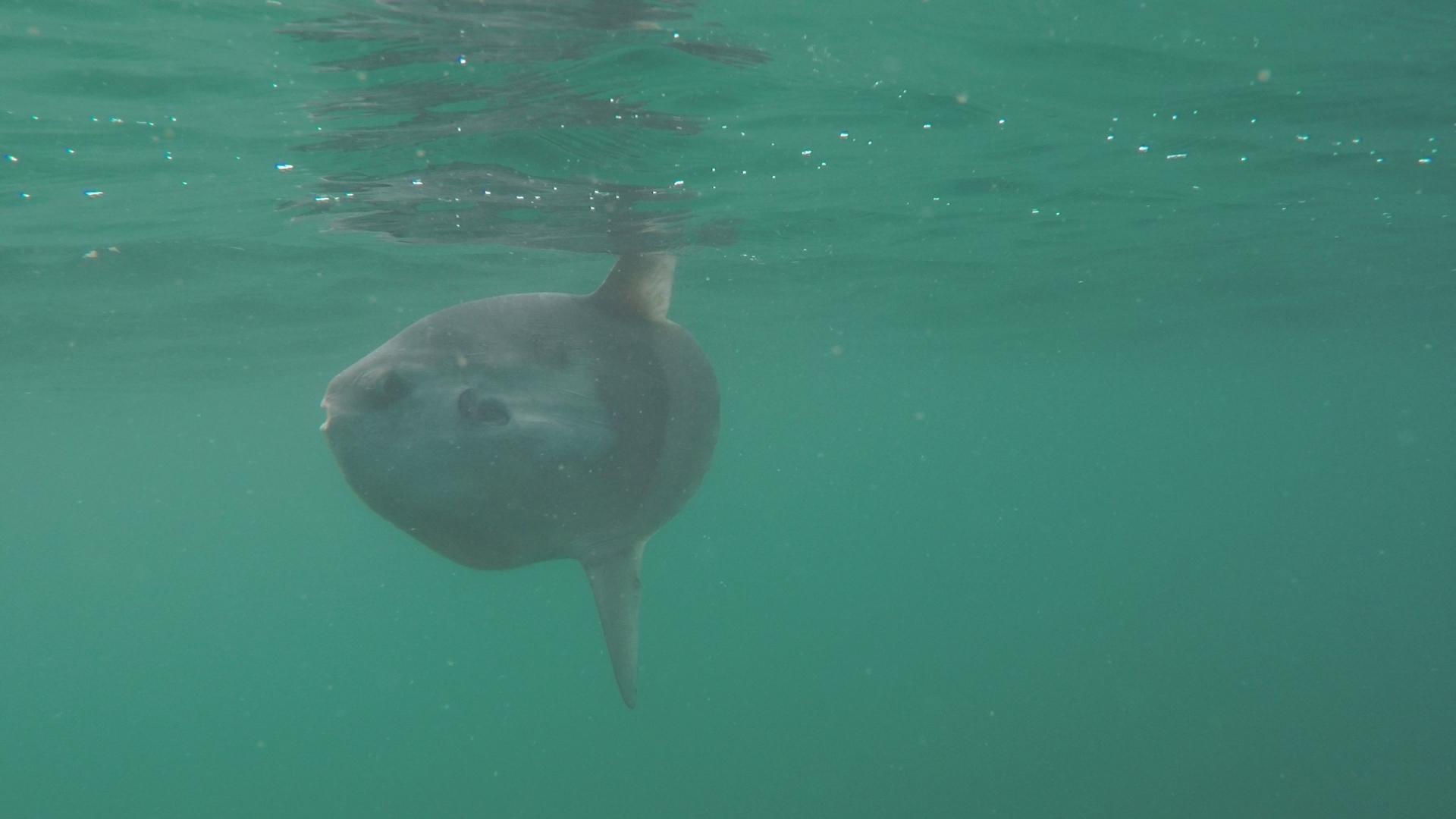Stand Up Paddleboarding (SUP), is the fastest growing watersport in the world, and for good reason – it’s super accessible, anyone of any age, size and ability can give it a go, and you can use it to explore some pretty cool, otherwise inaccessible places.
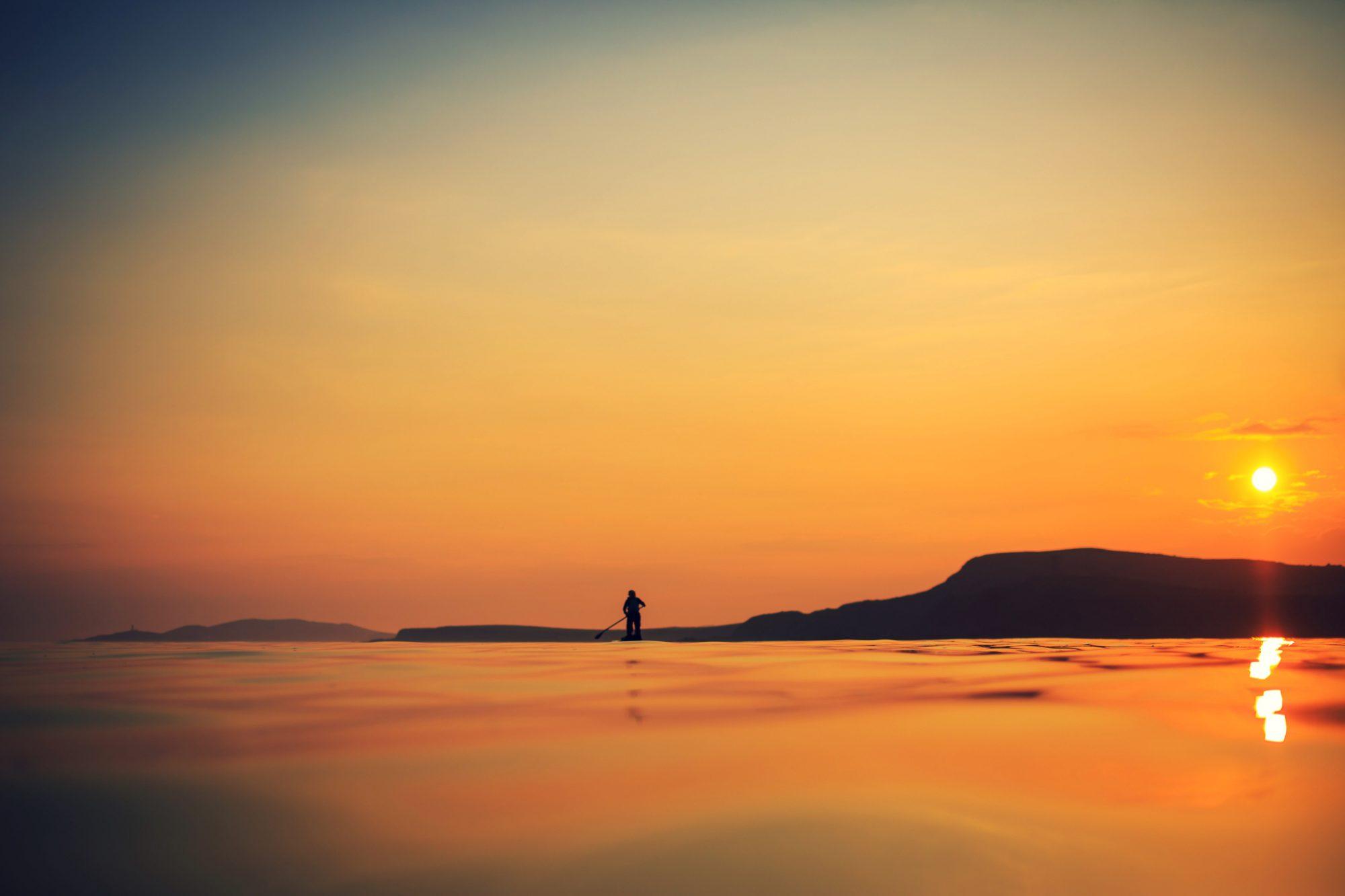
1
It’s just like riding a bike … it takes time … persevere
Stand up paddleboarding, like anything, takes time to get used to. At first it’s a bit tricky to get your balance, but once you’ve cracked it, it becomes second nature. I am quite honestly now more stable on the board than on dry land, but it wasn’t always that way! To start with it can be helpful to paddle on your knees, until you get a feel of the board and are ready to get up onto your feet.
2
Look at horizon and bend your knees
If you think you’ll fall off, you’ll fall off. However, if you bend your knees, focus on the horizon and believe, you’re much more likely to stay on! SO many times this has proved true to me – if I think I’ll fall, I invariably do. Get your centre of gravity low, stare at the horizon and firmly tell yourself you’re staying on your board. And if it’s really getting wobbly, drop down to your knees for a bit of extra stability.
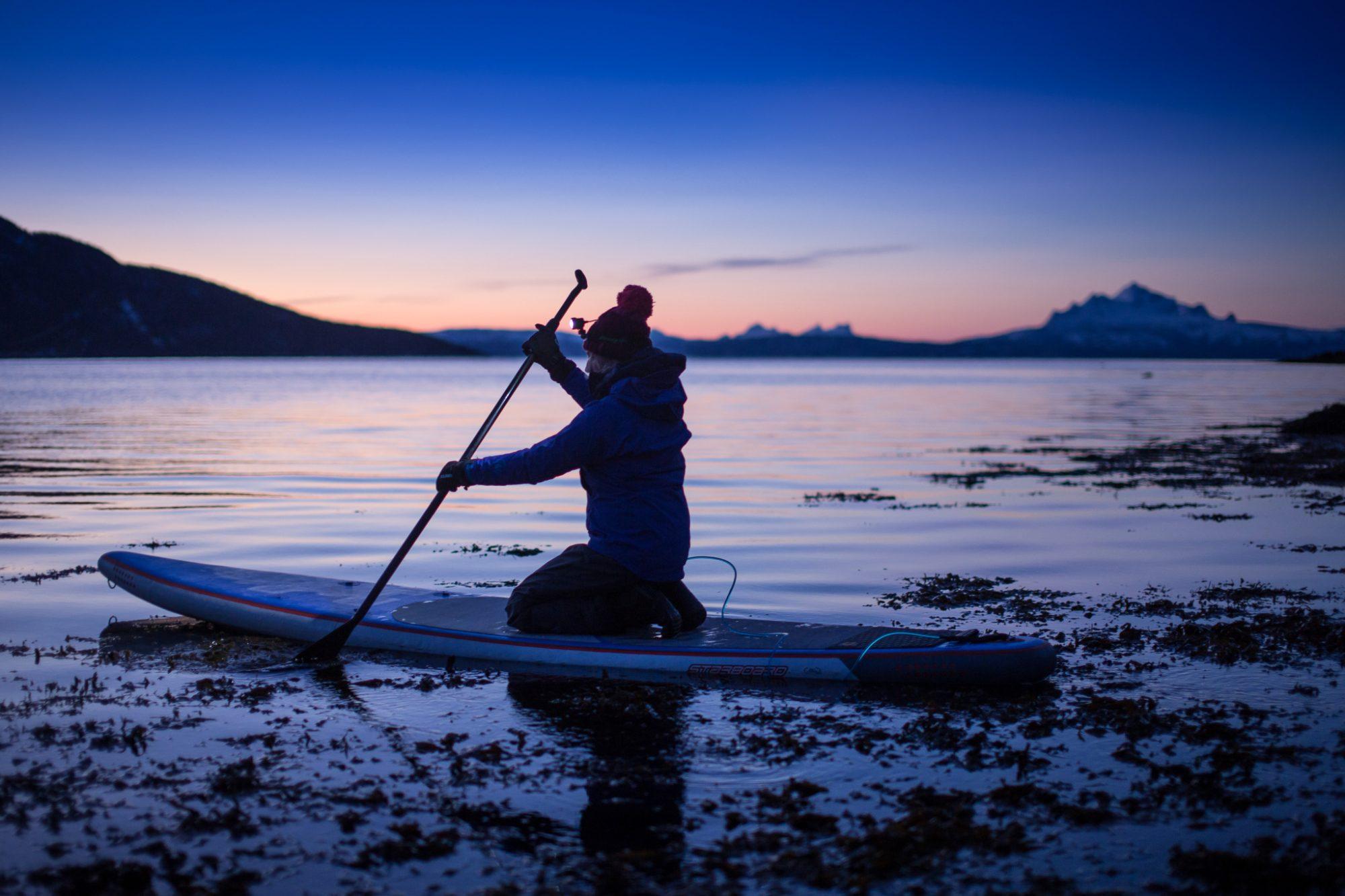
3
Find a club
There are loads of SUP clubs all around the country. Finding a club near you will give you people to paddle with, to ask questions of, loan you a board and help you to find one of your own once you’re ready. Check out this UK clubs directory.
4
Buying your first board
There are SO many different styles, lengths, brands and qualities of board available, it can be a little bit intimidating choosing your first board. Generally speaking, the longer and narrower the board, the more glide it has. Narrowness and a pointy nose, however, make it generally less stable. You can get a hardboard or an inflatable, depending on your storage and transport situation, and what you’re wanting to use it for. It’s worthwhile trying out a few boards first, which is where paddling with a club can be really helpful. Supboardermag has loads of reviews of boards. I’d recommend looking on the second-hand boards pages on Facebook too for your first board, to keep costs down. I am an ambassador for Starboard, who make really amazing boards, fun to paddle, durable, and with a very strong environmental stance.
5
Clothing choice
What to wear when paddling?! Everyone has their own preference. When you first start out, it’s worth wearing a wetsuit for the inevitable dips. However once you get your sea legs you can choose to wear anything from shorts and a t-shirt in summer, to full waterproof kit in the winter. Check out the Palm Equipment website for paddling kit. My favourite paddling kit is a windproof jacket, with either neoprene leggings or fully waterproof trousers, depending on the time of year and the weather. For short paddles it’s really nice to be barefoot in the summer; however I almost always wear booties for long distance paddles, and always in the winter and would recommend booties to start with to protect the tops of your feet if you’re kneeling a lot.
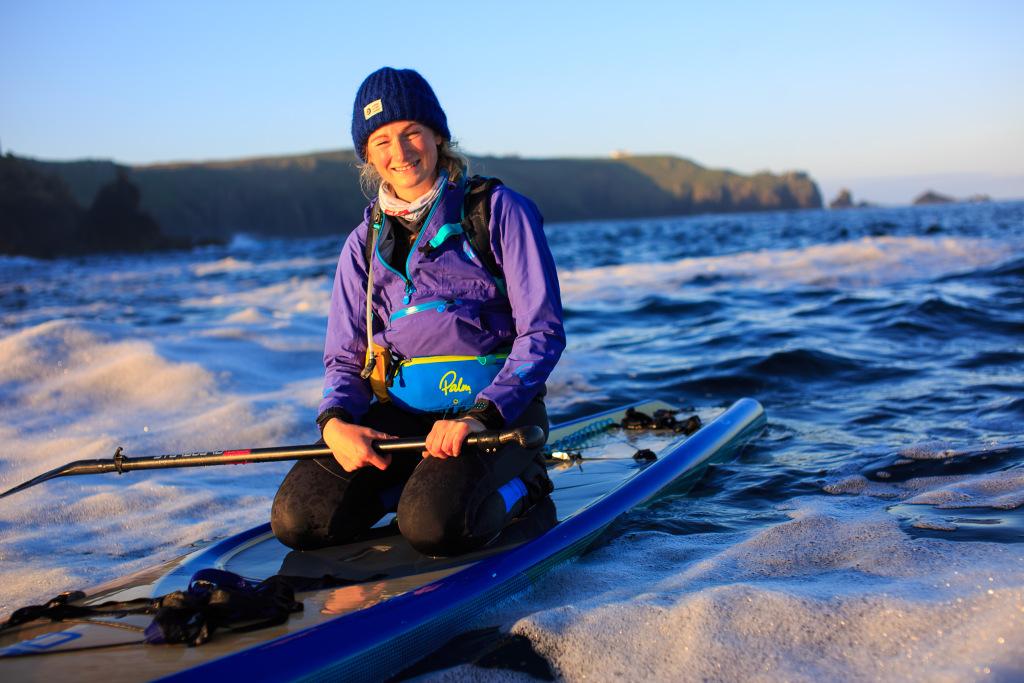
6
Safety
It’s really important to respect the water at all times, even if you consider yourself a competent water user. I would always recommend paddling with a buddy when starting out, and letting someone know where you’re going and how long you’re likely to be out. Safety equipment you should always carry includes a life vest or personal floatation device, always wear a leash to attach yourself to the board, and carry a mobile phone in a waterproof pouch. It’s also worthwhile considering taking a warm layer, food and water if you’re going out for a longer paddle.
7
Where to paddle
This comes down to both personal preference and experience. Generally canals require the least planning to paddle on, as there are no tides to consider, and they’re usually quite sheltered from the wind. Rivers need very careful consideration, as there are often strong currents, hazards in the water, and sometimes tides to think about. I would recommend that your first trip onto a river be with an instructor or experienced paddler who knows the local area well, and can talk you through planning future excursions. The ocean can be an absolutely wonderful place to paddle, my favourite for sure, but conditions here can change at the drop of a hat, even if it looks flat calm. Always make sure to check the tide times, local rips, surf forecast and wind forecast. A good rule of thumb is not to paddle in an offshore wind unless you want to end up out to sea! It’s really worth getting some local knowledge at the beach you intend to paddle at – I’ve always found talking to the RNLI lifeguards at the beach to be really valuable for this, or an experienced local paddler or paddle club. Always respect the water.
8
Doing good while you paddle
Exploring the local environment can bring enormous benefits. For years, stand up paddleboarders have been leading the way in picking up plastic from waterways, and highlighting the damage it does. When a place you love, your playground, is being damaged by human activity, it naturally follows for you to want to do something to protect it. So when you’re out on a paddle, don’t be afraid of picking up a few bits of litter. The positive effects of this are far reaching – highlighting it to people who see you, inspiring others to do the same, and helping connect the dots between the litter that’s damaging our environment and that which we’re using in our everyday life. Check out my blog and video on ‘Why bother with a beach clean’ here – the ideas can be extrapolated to rivers and canals too!
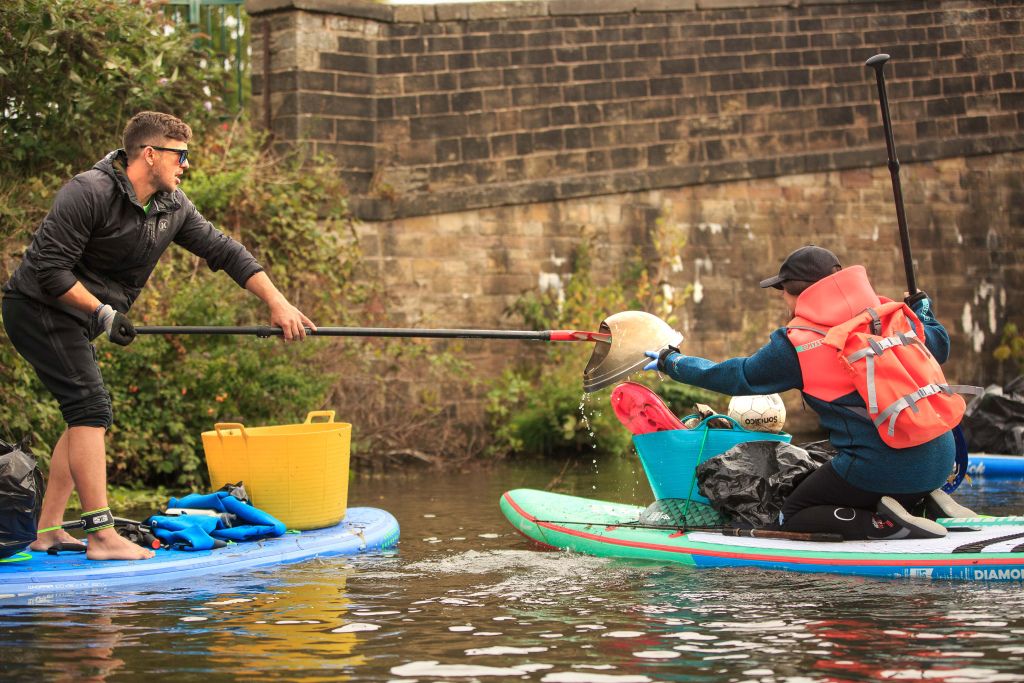
9
Being a responsible paddler
It’s important not to cause any damage to the environment you’re paddling in, and to make sure you have the appropriate permission. People wishing to paddle on canals and rivers in the UK will benefit from having British Canoeing membership: most canals require you to have it. It’s also important to be mindful of any wildlife that may call the place you paddle home – particularly nesting birds. It always amazes me the amount of wildlife that can be found in our waterways.
10
Green tips
As a stand up paddleboarder, consider yourself a waterways advocate. You will have choices, and where you can, it feels awesome to make the one that benefits the planet best. Firstly you vote with your wallet every time you buy a bit of kit – check out brands like Starboard who have partnered with Parley and Sustainable Surf to make boards with bio-resin, and organise worldwide paddle clean ups. Share lifts where you can to reduce your carbon footprint – or even better, ten eco points if you can get there on the train with an inflatable SUP (I know people who do this – shout out to SUP North!) And finally, always, always choose reef friendly sunscreen. Even a drop of oxybenzone in the ocean or down the drain can kill vast amounts of corals.
